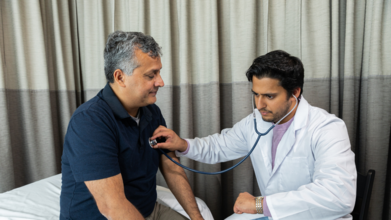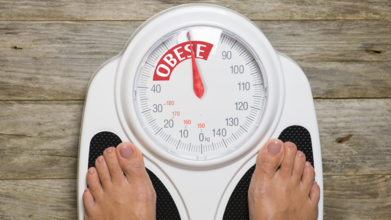- Health Conditions A-Z
- Health & Wellness
- Nutrition
- Fitness
- Health News
- Ayurveda
- Videos
- Medicine A-Z
- Parenting
- Web Stories
As China Revives COVID-Era Measures To Beat Chikungunya Virus, Here's All You Should Know About This Mosquito-borne Disease

Credits: Canva
China Chikungunya Virus: More than 7,000 cases of Chikungunya have been reported from China's Foshan, confirmed the government report. The Chinese authorities, as a result, have taken measures to curb the spread of chikungunya, a virus known for causing fever and joint pain. The Health and Me has reported on the methods, including the use of biological weapons as the different breed of mosquitoes, namely, the elephant mosquitoes to combat the larvae carrying the chikungunya virus. Other health measures like tests, complying by the government orders, and fines if not, have been taken too, which has resulted it into being called the 'COVID-era' measure.
How Did China Combat COVID-19?
A 2022 study published in the International Journal of Environmental Research and Public Health, notes that during the COVID-19 pandemic, criminal acts that seriously violated pandemic prevention and control provisions were subjected to criminal punishment.
For instance, acts casing the spread of coronavirus, or posing a serious risk of spreading would constitute as a crime under the Article 330 of the Criminal Law of the People's Republic of China.
If one obstructs the state functionaries from carrying out pandemic investigation to the law by means of violence or threat would be considered a crime under Article 277.
Driving up prices or seeking exorbitant profits or making illegal income would be considered a crime under Article 225.
For those who spread false information online would also be considered criminals under the Article 291.
Chinese courts have tried criminal cases involving pandemic prevention and control in accordance with the law, punished criminal acts that harmed the public interest and the quality of health and life, and demonstrated the important role of judicial bodies in ensuring the quality of public health and life.
During the COVID-19 pandemic, in order to control the situation and ensure public order, Chinese government departments at all levels gained more administrative law enforcement authority, notes the study.
How Has China 'Revived' Covid-Era Measures For Chikungunya Outbreak?
Foshan has asked pharmacies to report identities of people who buy any of the 47 drugs to relieve chikungunya symptoms such as fever, rash, and join pain. The notice was issued by the city's Market Supervision Bureau. This is a similar policy adapted during the COVID-19 pandemic, where pharmacies would trigger a pop-up on an individual's health code, for the government to track. This will also limit their movement and subject them for a mandatory test.
Like COVID-19 measures, a campaign for disinfecting areas has been launched in Foshan, for seven days, which will also include community mobilization to clear stagnant water and promoting use of window screens and mosquito nets.
In pandemic, those who failed to comply by the government rules were expected to submit a fine, or were punished. In a similar manner, hotels, restaurants and companies that failed to clean up stagnant water would face a fine up to 1,000 yuan, which is roughly $139. As per an illustrated government explainer, those who do not cooperate could be fined, or face criminal charges for "obstructing the prevention of infectious diseases". In fact, five households had their electricity cut for not cooperating.
Travellers directories are also being maintained, especially of those who have symptoms such as fever, headache, and joint pain.
ALSO READ: US Weighs China Travel Warning As Chikungunya Cases Near 5,000: Report
What Is Chikungunya?
As per the World Health Organization (WHO), chikungunya is a mosquito-borne viral illness that causes fever and intense joint pain, often leaving patients debilitated for days or even weeks. Though it shares symptoms with dengue and Zika, chikungunya is a distinct disease caused by the chikungunya virus (CHIKV), primarily transmitted by Aedes aegypti and Aedes albopictus mosquitoes. These mosquitoes bite mostly during daylight and breed in stagnant water.
Global Distribution and Outbreaks
CHIKV was first identified in Tanzania in 1952, notes WHO. Initially seen in Africa and Asia, the virus has since spread rapidly. Since 2004, it has caused outbreaks in over 110 countries, including those in the Americas and Europe. The increase in cases is partly due to viral mutations that make it easier for Aedes albopictus to transmit the virus, and partly due to the virus entering populations with no prior immunity. In places where most of the population gets infected and recovers, transmission often slows down. However, in regions with low infection rates, the virus continues to circulate.
How It Spreads
Symptoms and Risks
Symptoms usually appear 4–8 days after being bitten. The illness begins with sudden fever and severe joint pain, especially in the hands and feet, which may last from days to months. Other symptoms include muscle pain, fatigue, rash, nausea, and headache. Because these overlap with dengue and Zika, misdiagnosis is common.
While most patients recover fully, some develop eye, heart, or neurological complications. Infants and older adults, especially those with existing health conditions, are more prone to severe illness and may need hospitalization. Thankfully, fatalities are rare. Once recovered, individuals are believed to have lifelong immunity.
ALSO READ: Medical Memoir: How Chikungunya, A Tanzinian Virus Affected Millions Throughout The World
Diagnosis and Treatment
CHIKV can be confirmed using RT-PCR tests in the first week of illness. Antibody tests can also detect past infections within the first two months after symptoms begin. There is no specific antiviral treatment. Supportive care includes paracetamol for pain and fever, rest, and plenty of fluids. NSAIDs should be avoided until dengue is ruled out, due to bleeding risks.
Vaccines and Prevention
Two vaccines have received regulatory approvals in some countries but are not yet in widespread use. WHO is reviewing data to decide on future vaccine recommendations. Until then, the best protection is prevention.
Key steps include:
- Eliminating mosquito breeding sites by emptying water containers weekly
- Wearing long clothing
- Using window screens and insect repellents containing DEET, IR3535 or icaridin
- Using insecticide-treated nets, especially for those sleeping during the day
- Avoiding mosquito bites during the first week of illness to stop further spread
How Fast Is Your Heart Aging? A New Tool Can Find Your Cardiovascular Biological Age

(Credit-Canva)
Researchers have developed an online tool that tells you your "heart age." Instead of giving you a complicated percentage risk of a heart attack or stroke, the tool gives you a single number that is easier to understand. For example, a 45-year-old person might find out they have a heart age of 60, which is a powerful way to show that their heart is working much harder than it should be.
The tool is based on the same information doctors already use to assess your risk, including your age, sex, cholesterol levels, blood pressure, and whether you smoke or have diabetes.
What Heart Age Reveals About Americans
According to the study published in the JAMA Cardiology, researchers tested the calculator on more than 14,000 U.S. adults. On average, they found that most people's hearts were older than their actual age. The gap was bigger for men than for women.
Women: Average age 51.3, average heart age 55.4
Men: Average age 49.7, average heart age 56.7
The difference was even greater for Black and Hispanic participants and those with lower income and education levels. A heart age that is five to ten years older than your real age is a sign that you should talk to your doctor about making lifestyle changes or starting treatment.
How Does This Tool Help Heart Health?
Many experts believe this new tool is a great way to help people understand their heart health. Presenting risk as a simple "heart age" is more impactful and easier to grasp than a percentage. However, some doctors are not so sure. They point out that we don't have proof that knowing your heart age actually leads to people making healthier choices. They also worry that a person with a low heart age might get a false sense of security and ignore other risk factors.
How to Use the Heart Age Tool
If you want to try the tool, you'll need some information from your last doctor's visit, such as your blood pressure and cholesterol numbers. If your heart age is higher than your actual age, it's a good idea to speak with your doctor. They can help you create a plan to lower it by focusing on key areas like:
- Lowering high blood pressure and cholesterol
- Quitting smoking
- Improving your diet
- Exercising more often
Can Slow Down Your Biological Aging?
According to the National Institute of Health, treatments are still being developed, there are many things you can do right now to slow the aging process. Experts agree that the best ways to stay healthy as you age are the same things you already know:
- Physical activity is considered one of the most effective ways to combat aging.
- Healthy eating is also crucial.
- Calorie restriction (CR), or reducing your calorie intake while still getting essential nutrients, has been shown to increase longevity and delay age-related diseases in studies. A two-year study found that people who reduced their calories by an average of 12.5% showed a slower biological aging pace.
- Other key lifestyle choices include not smoking, maintaining a healthy weight, getting enough sleep, and managing health conditions like high blood pressure and cholesterol.
Are Heatstroke And Heat-Illnesses Still Problems In Monsoon? The Answer Is Yes, Here's How

(Credit-Canva)
As soon as we heat peak summer heat in India, the only thig most people look forward to are the monsoon rains. Even with untimely mid-summer rains, people breathe a sigh of relief, even if it is momentary. With the transition of summer to monsoon, people find themselves feeling relieved that their risk of heat-related issues are lesser. However, it is still a looming issue, nonetheless.
A 2024 study published in the Advancing Earth and Space Sciences, points out the increasing danger of moist heat in India, especially during monsoon breaks. It finds that the periods of dry weather during monsoon season are becoming more frequent and is exposing hundreds of millions of people to life-threatening conditions.
The report points to global warming and specific weather patterns as the main causes, which in turn are projected to have serious consequences for public health and the economy.
What is Moist Heat and Why is it a Problem?
Moist heat is a combination of high temperature and high humidity. It's especially dangerous because the high humidity prevents sweat from evaporating, which is how our bodies cool down.
The report uses the Wet-Bulb Globe Temperature (WBGT) to measure this risk. A WBGT of over 31°C is considered hazardous for physical work. This is a critical point where people working outside can suffer from heat exhaustion, heatstroke, and other life-threatening conditions.
How is Heat In Monsoon An Issue
The study's most significant finding is that monsoon breaks, which are short periods without rain during the monsoon season, are surprisingly dangerous. While we often think of the monsoon as a time of cooling rain, these breaks create conditions of extreme moist heat. The report shows that monsoon breaks are a far greater threat than the hot summer months.
Widespread Danger:Between 1951 and 2020, monsoon breaks led to an increase in the area of India exposed to dangerous WBGT levels. This affected at least 670 million people.
Greater Risk Than Other Seasons: The risk of extreme moist heat during monsoon breaks is substantially higher than during other times of the year.
What Is The Reason Behind Heat In Monsoon?
The research points to two main factors behind the rise in extreme moist heat during monsoon breaks:
Global Warming
The study found a strong link between rising global temperatures and the increase in moist heat extremes in India. This suggests that global warming is making these events more frequent and intense.
Monsoon Weather Patterns
Specific weather patterns during monsoon breaks, like periods of prolonged warming and changes in air circulation, are also driving up moist heat levels. The presence of high humidity and heat during these dry spells creates a perfect storm for dangerous conditions.
How Does Heat In Monsoon Affect People?
This research has major implications for public health and policy in India, a country where a large portion of the population works in agriculture and construction.
Reduced Work Performance
The study projects that work performance in India could decline by 30-40% by the end of the century due to rising moist heat.
Economic Consequences
This drop in productivity could lead to a significant economic loss, potentially reducing India's GDP by as much as 4% and causing crop prices to rise.
Need for Policy Change
The findings emphasize the urgent need for a review of outdoor working hours and the development of new public health policies to protect workers from the growing threat of extreme moist heat.
Can Obesity Cause Cancer? Study Finds A Link Between This Common Cause Of Obesity In Our Diet And Increased Risk Of Cancer

(Credit-Canva)
The fight against weight gain and fat loss is something many people are fighting globally. Understanding that losing weight is more than simply being a smaller size is still foreign to many people, causing them to adopt unhealthy habits. When you lose weight, one needs to make sure they are eating appropriate foods because what you eat could have a huge impact on your health, sometimes even more than the weight itself.
Obesity is known to increase the risk of many cancers and weaken our body's ability to fight tumors. In a 2019 study obesity was linked to 4.8% of new cancers in men and 10.6% in women.
But a new study shows that not all fats are the same when it comes to this risk. The type of fat we eat can have a big impact on how tumors grow, even if a person is the same weight.
How Do Different Kinds Of Fat Affect Tumor Growth?
Researchers wanted to understand if all fats are the same when it comes to cancer risk in people with obesity. They fed mice different high-fat diets and found some surprising results.
Diets made with animal fats like lard, beef tallow, and butter made tumors grow much faster. However, diets made with plant oils like coconut, palm, and olive oil did not cause this accelerated tumor growth. What's most important is that all the mice were equally obese. This shows that the type of fat, not just being obese, is what made the difference in how the tumors grew.
How Did These Fats Affect Our Immune System?
The researchers discovered that the type of fat in the diet affects the body's immune system, specifically two types of cells: natural killer (NK) cells and CD8 T cells. These are the "killer" cells of our immune system, responsible for fighting off cancer.
- In mice fed the butter-based diet, these immune cells were less active and fewer in number inside the tumors.
- In mice fed the palm oil-based diet, these immune cells were more active and better at fighting the tumors.
This difference seems to be related to a specific fat-related molecule. The butter-based diet led to a buildup of a fatty substance called long-chain acylcarnitine in the blood. This substance acted as an "immunosuppressive metabolite"—it actively suppressed the function of the CD8 T cells, making them less effective at killing cancer cells.
Can Obesity Cause Cancer?
According to the National Cancer Institute, a strong connection between excess body weight and at least 13 types of cancer has been found. The risk is highest for endometrial and esophageal cancers. For these, a person with severe obesity can have a risk that is 5 to 7 times higher than someone at a healthy weight. For other cancers, the risk for people with obesity can range from a 10% increase to double the risk.
Why Does Excess Weight Increase Cancer Risk?
Scientists have several ideas about how obesity and overweight can lead to cancer:
Extra Estrogen
Fat tissue produces more estrogen. High levels of this hormone can increase the risk of cancers like breast, endometrial, and ovarian cancer.
Insulin and IGF-1
People with obesity often have higher levels of insulin and a hormone called IGF-1 in their blood. High levels of both can encourage cancer growth, especially for colorectal, thyroid, breast, and other cancers.
Chronic Inflammation
Excess body fat can cause ongoing, low-level inflammation in the body. This inflammation can directly help tumors grow.
Hormones from Fat Cells
Fat cells release hormones called adipokines. Some of these, like leptin, can promote cell growth, while others, like adiponectin, which helps protect against cancer, are less common in people with obesity.
Does Losing Weight Lower Cancer Risk?
While more research is needed, some studies suggest that losing weight can reduce the risk of certain cancers. In one large study of postmenopausal women, those who lost more than 5% of their body weight had a lower risk of obesity-related cancers, especially endometrial cancer.
Weight loss surgery (bariatric surgery) has also been shown to reduce the risk of cancer overall, especially in women. Some newer weight-loss medications have also been linked to a reduced risk of certain cancers.
© 2024 Bennett, Coleman & Company Limited

